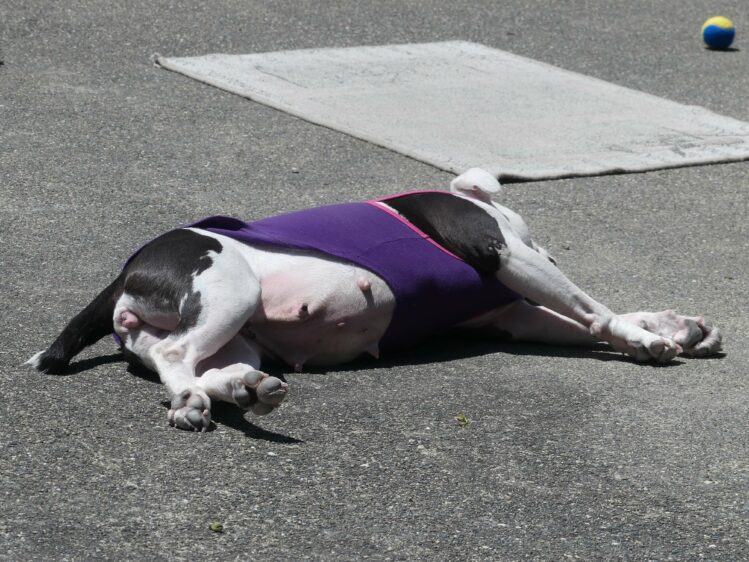THE STEPS TO TAKE IN THE PROPER USE OF CPR ON DOGS
IN THIS ORDER: AIRWAY, BREATHING AND CIRCULATION
Make sure that you check your dog’s breathing and pulse before doing any CPR. Do not commence CPR if the dog is breathing normally and has a pulse, doing so could be dangerous. Check your dog’s breathing by looking to see if the chest is rising and falling ( you can also place a mirror in front of the nose to check for condensation ). To his pulse, put your hand on the left side of his chest to feel if the heart is still beating.
THE AIRWAY
Your dog has stopped breathing so what do you do, lay him on his side and make sure that his throat and mouth are clear of any objects or mucous that might be preventing breathing. Your dog may bite down instinctively on any object placed in his mouth, so be careful. If you find any blockage, remove it. Then pull your dog’s tongue out of his mouth, so it doesn’t block the airway.
BREATHING
When your dog starts breathing, allow him to assume the most comfortable position for him. If he isn’t breathing, you can start to perform artificial respiration. Do this by making sure that the dog’s neck is not-extended, then wrap one hand over his entire mouth, wrap your lips around his nose and breathe slow, even breaths into his nose until he starts breathing.
This is an unexpected and frightening event, so try to remain calm and count accurately when you’re trying to save your dog’s life, the rule of thumb is 20 breaths per minute for dogs over 30 pounds. And 20 – 30 breaths per minute for dog’s weighing less than 30 pounds.
CIRCULATION
This is the final step of CPR and should only be attempted after the airway and breathing steps have been completed. If you can’t feel a pulse, you can leave your dog on his side, if he’s on a hard surface. When the dog is barrel-chested breed like a bulldog, CPR is done best when he’s on his back. You then need to kneel down and place your hands on either side of his chest ( approximately the middle of the rib cage ) and press down in even, steady beats. Stop after a minute and check for a pulse. If there isn’t one, continue.
When the dog is under 30 pounds, you should compress the chest about 1 inch at a rate of two times a second. Of 5 compressions for every breath. For dogs 30 – 100 pounds, you need to compress the chest 2 – 3 inches at a rate of 1.5 – 2 times per second. Or 5 compressions for each breath.
And for dogs over 100 pounds, perform CPR as for a large dog, but compress the chest about once per second. Or 10 compressions for every breath.
Try to perform CPR until your reach a vet, or a vet can get to you. If you can you should call ahead and tell the vet that the dog is in respiratory arrest with a foreign body/airway obstruction and/or cardiac arrest.
YOU SHOULD PERIODICALLY PRACTICE THIS STEPS BECAUSE YOU NEVER KNOW


